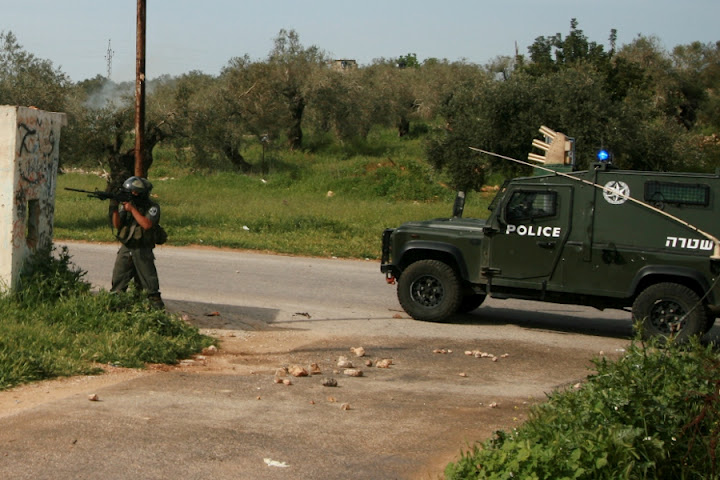Tag: Tear-Gas Canister
-
Kufr Qaddoum: two boys arrested and beaten before weekly demonstration
By Tete Telsen 17 June 2012 | International Solidarity Movement, West Bank Prior to the weekly demonstration in Kufr Qaddoum last Friday, June 15, two young Palestinian boys were detained and beaten by Israeli soldiers. At least three others were injured by tear gas canisters during the peaceful protest that ensued. Shortly after noon on…
-
Urif: Israeli settlers attack village, Palestinian shot in abdomen
By Tete Tele 26 May 2012 | International Solidarity Movement, West Bank On May 26, the village of Urif, south of Nablus, was attacked by Israeli settlers from the illegal Yitzhar settlement. Extensive amounts of agricultural land belonging to Urif were burned and settlers threw stones and shot live ammunition at civilians from the village.…
-
Nabi Saleh: 16 year old shot with tear gas canister
by Rana Hamadeh 19 April 2012 | International Solidarity Movement, West Bank A nonviolent demonstration in the Palestinian village of Nabi Saleh last Friday, April 13th was met with Israeli army aggression, resulting in at least six injuries, including a sixteen-year old boy shot above the eye with a tear gas canister. Following the Friday…

